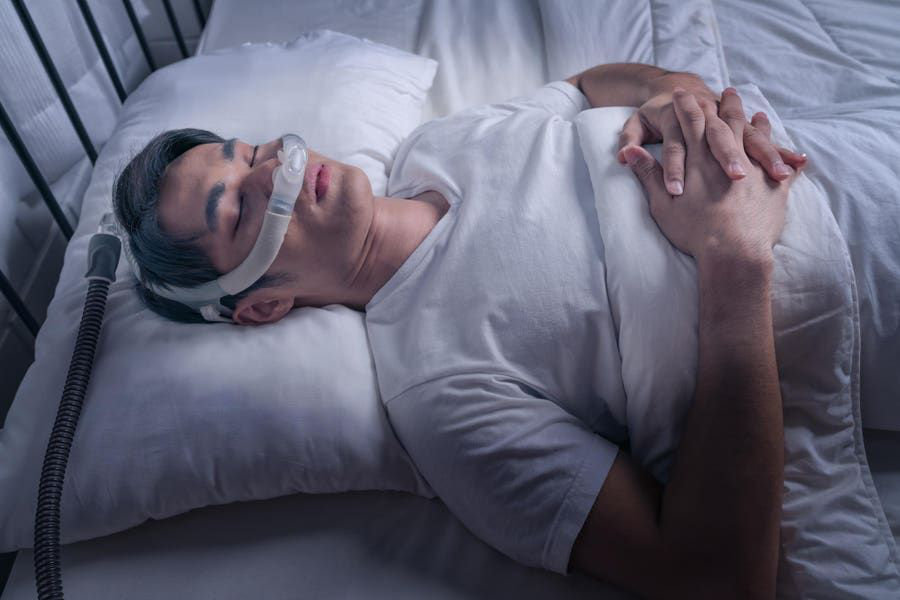Benefits of Modafinil for Obstructive Sleep Apnea Patients: What You Should Know
Obstructive Sleep Apnea (OSA) is a chronic sleep disorder characterized by repeated airway obstruction during sleep, leading to fragmented rest and excessive daytime sleepiness (EDS). Continuous Positive Airway Pressure (CPAP) therapy is the standard treatment, but a significant number of patients continue to experience daytime fatigue. Modafinil, a wake-promoting agent, has emerged as a therapeutic option for such cases.
💊 What Is Modafinil?
Modafinil is a non-amphetamine central nervous system stimulant originally approved for narcolepsy, shift work sleep disorder, and EDS associated with OSA. It promotes wakefulness through hypothalamic mechanisms without significantly affecting cardiovascular function (Pack et al., 2001).
According to the U.S. Food and Drug Administration (2007), Modafinil (Provigil®) is indicated in the U.S. for treating excessive sleepiness linked to several conditions, including OSA.
🧠 Unlike amphetamines, modafinil has a low abuse potential, making it a safer alternative for long-term use.
⚕️ How Does Modafinil Help in OSA?
🕒 Reduced Daytime Sleepiness
In a randomized controlled crossover trial, Chapman et al. (2014) demonstrated that 200 mg/day of modafinil led to a clinically significant reduction in ESS scores by 3.6 points in untreated mild to moderate OSA patients (p = 0.003). This effect size surpasses the 1–2 point improvements typically seen with CPAP in similar populations.
“Two-thirds of patients had normalised ESS scores after modafinil, compared to one-third on placebo.” — Chapman et al. (2014)
🚗 Improved Cognitive and Driving Performance
The same study reported improved simulated driving performance (steering deviation reduced by 4.7 cm, p = 0.018) and psychomotor vigilance. These results support modafinil’s utility in improving real-world alertness, which may reduce the risk of accidents.
🩺 Enhanced Wakefulness in CPAP Users
In a parallel-group RCT, Pack et al. (2001) found that modafinil significantly reduced daytime sleepiness in CPAP-adherent OSA patients.
- 51% of patients on modafinil normalized their ESS scores, vs. 27% on placebo.
- Improvements were seen in both ESS and Multiple Sleep Latency Test (MSLT) scores.
These findings suggest modafinil can serve as an adjunctive therapy in patients who are compliant with CPAP but still experience EDS.
📈 Meta-Analysis of Efficacy and Safety
Chapman et al. (2016) conducted a meta-analysis of 10 RCTs (N=1,466) on modafinil and its enantiomer armodafinil for residual sleepiness in OSA:
- ESS score improvement: +2.2 points over placebo (95% CI: 1.5–2.9)
- Maintenance of Wakefulness Test: +3 minutes over placebo
- Adverse events: Tripled compared to placebo, though no increase in serious adverse events was reported
“Modafinil/armodafinil improves both subjective and objective sleepiness but may increase minor side effects.” — Chapman et al. (2016)
🧪 Early Clinical Evidence
Arnulf et al. (1997) conducted a pilot study of 6 patients with untreated OSA. Participants received modafinil and showed reduced daytime sleepiness, paving the way for more extensive trials.
Though small in scale, the study by Arnulf et al. supported the hypothesis that modafinil could be effective even in the absence of CPAP.
🛑 Safety and Considerations
Common Side Effects
- Headache
- Nervousness
- Nausea
- Insomnia
Regulatory Caveats
While modafinil remains approved for OSA-related EDS in the U.S., the European Medicines Agency withdrew this indication in 2011 due to concerns over adverse effects. Clinicians must evaluate patients on a case-by-case basis (Chapman et al., 2016).
👥 Who Should Consider Modafinil?
Ideal Candidates:
- Adults with mild to moderate OSA and persistent daytime sleepiness
- CPAP users with residual EDS (ESS ≥10)
- Patients who do not tolerate or adhere to CPAP
Contraindications:
- History of cardiovascular disease
- Concurrent use of CYP3A4-metabolized medications
- Pregnancy and breastfeeding
📌 Practical Advice for Patients
- Dose: Typically 200 mg once daily in the morning.
- Monitoring: Regular assessments using ESS, blood pressure checks, and clinician follow-ups are advised.
- Not a Replacement for CPAP: Modafinil should complement — not replace — CPAP where applicable.
📚 References
- Arnulf, I., Homeyer, P., Garma, L., Whitelaw, W. A., & Derenne, J. P. (1997). Modafinil in obstructive sleep apnea-hypopnea syndrome: A pilot study in 6 patients. Respiration, 64(2), 159–161. https://doi.org/10.1159/000196661
- Chapman, J. L., Kempler, L., Chang, C. L., Williams, S. C., Sivam, S., Wong, K. K., Yee, B. J., Grunstein, R. R., & Marshall, N. S. (2014). Modafinil improves daytime sleepiness in patients with mild to moderate obstructive sleep apnoea not using standard treatments: A randomised placebo-controlled crossover trial. Thorax, 69(3), 274–279. https://doi.org/10.1136/thoraxjnl-2013-203796
- Chapman, J. L., Vakulin, A., Hedner, J., Yee, B. J., & Marshall, N. S. (2016). Modafinil/armodafinil in obstructive sleep apnoea: A systematic review and meta-analysis. European Respiratory Journal, 47(5), 1420–1428. https://doi.org/10.1183/13993003.01509-2015
- Pack, A. I., Black, J. E., Schwartz, J. R., & Matheson, J. K. (2001). Modafinil as adjunct therapy for daytime sleepiness in obstructive sleep apnea. American Journal of Respiratory and Critical Care Medicine, 164(9), 1675–1681. https://doi.org/10.1164/ajrccm.164.9.2103032
- U.S. Food and Drug Administration. (2007). PROVIGIL® (modafinil) tablets [prescribing information]. U.S. Department of Health and Human Services. https://www.accessdata.fda.gov/drugsatfda_docs/label/2007/020717s020s013s018lbl.pdf








